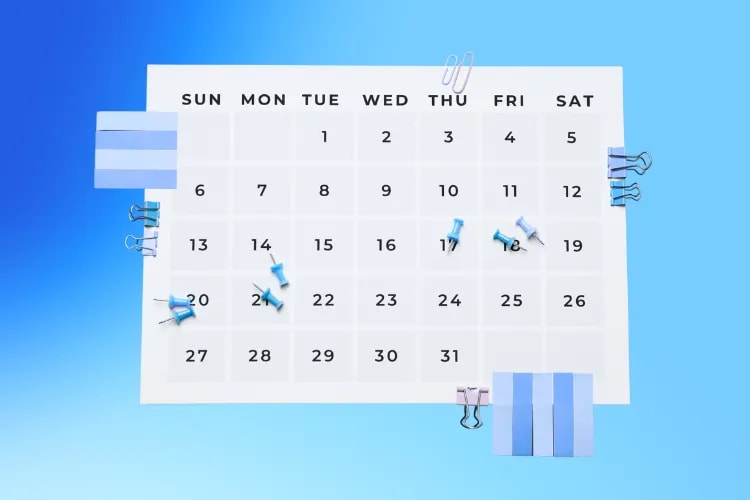
Whether you’re producing a 200-person client summit or a 20,000-attendee festival, one truth never changes: every decision lives on a budget line. In today’s market, staying on budget isn’t just good hygiene—it’s a strategic advantage that lets you deliver more value where it matters and protect your margin.
The challenge? Prices have surged across venues, F&B, travel, and AV—and they’re not retreating anytime soon. Industry research shows planners are battling persistent increases and are responding by trimming AV, shortening programs, and contracting earlier to control spend. Global DMC Partners’ Q3 2024 survey is a clear signal: expect structural cost pressure and plan savings levers up front.
In this guide, we’ll show you how to reduce event costs without sacrificing attendee experience. These aren’t vague tips—they’re field-tested moves you can apply across your next RFP, run-of-show, and marketing plan. From sharpening objectives to automating admin, this is your playbook to run leaner, smarter events.
What you’ll learn:
How to set measurable goals that allocate budget to what moves the needle
Negotiation tactics that create win-wins (and better pricing) with vendors
Ways to automate registration, comms, and reconciliation to reclaim hours
Venue strategies for off-peak savings and “all-in” cost clarity
Marketing plays that rely on high-ROI, low-cost channels
Live budget tracking and reforecasting to catch overruns early
You can’t reduce event costs strategically without clear objectives. Vague goals produce vague budgets; clear goals tell your money where to go. Start by defining the core outcomes—pipeline generated, tickets sold, net promoter score, content produced—and score each by importance. Link every major expense line to one or more objectives so you can defend spend that drives results and trim the rest.
Treat your budget as a living forecast, not a set‑and‑forget spreadsheet. Leading finance teams favor rolling reforecasts over static annual plans because conditions change. Apply the same discipline to your event: revisit your forecast at each milestone (venue lock, talent lock, reg launch, 30/14/7 days out) and reallocate to the activities delivering the most impact.
The Loopyah Content Team shares expert insights, practical guides, and industry updates to help event organizers create unforgettable experiences and stay ahead in the event planning world.
planning
A practical framework:
Write SMART objectives and rank them by must‑have, nice‑to‑have, not‑now.
Map budget to objectives: every line gets a purpose or it gets questioned.
Establish guardrails: max spend per attendee, per lead, or per sponsor deliverable.
Pre‑plan tradeoffs: if AV rises 15%, which decor lines drop first?
Example: If your No. 1 objective is revenue from ticket sales, invest in conversion drivers (pricing strategy, email automation, checkout UX) and reduce low‑impact spend (over‑engineered scenic, redundant print). If the goal is executive relationship‑building, prioritize VIP F&B and curated networking and trim broad paid media.
If you need a detailed starting point, our guide on building an event budget walks through templates, categories, and cadence.
You’ll reduce event costs faster by negotiating structure, not just price. The most effective planners show flexibility on dates, scope, and concessions to unlock better terms while keeping partners motivated to say yes.

Use Multiple Equivalent Simultaneous Offers (MESOs): present two to three packages you’d be equally happy with to surface what the vendor values most (dates, volume, multi‑year commitment, branding). It’s a research‑backed tactic that creates value and preserves relationships. Learn more from Harvard’s Program on Negotiation guide to MESOs.
Negotiation checklist to reduce event costs:
Bid early and competitively: get at least three comparable quotes and standardize your request (dates, load‑in/out, service charges, inclusions).
Offer MESOs: e.g., (A) weekday dates + 10% rate reduction + 2 extra rehearsal hours; (B) shoulder-season dates + wi‑fi included + waived rigging fees; (C) multi‑year deal + discounted F&B minimums.
Trade across issues: if a venue can’t drop room rate, ask for comp meeting space, included basic AV, or lower service charge caps.
Protect the fine print: request AV/internet/power/rigging price sheets and third‑party policies before you sign; include them in the contract.
Barter and in‑kind: exchange logo placement, stage time, or exhibit space for services (e.g., connectivity upgrades or decor items).
Example trade: You accept Tuesday–Thursday pattern instead of a peak Wed–Fri and agree to a 15% higher F&B minimum in exchange for a 12% room discount, complimentary general session space, and waived basic AV package. Net: lower total cost of ownership while preserving attendee experience.
Want more tactics tailored to venues? Read our playbook on negotiating a venue deal—including questions to ask and concessions worth more than face value.
Admin is the hidden tax on event budgets. Teams regularly spend over half their time on “work about work”—chasing approvals, duplicating updates, reconciling spreadsheets. Automation gives those hours back, reduces errors, and helps you redeploy spend to attendee value.
An end‑to‑end event platform like Loopyah consolidates registration, ticketing, seat maps, email, onsite check‑in, and reporting—so you cut tool sprawl and manual handoffs. Explore what’s included on our event software features page.
High‑impact automations that reduce event costs:
Registration and ticketing: self‑serve checkout, promo codes, tiered pricing, waitlists, and automated confirmations.
Smart communications: segment audiences and schedule emails/SMS based on behavior (abandoned checkout, last‑minute reminders).
Onsite ops: QR-code badges and scanning cut queue times and reduce staffing hours.
Financials: automatic fee/tax calculations, payouts, and post‑event reconciliation reduce accounting cycles.
Reporting: dashboards show revenue, registrations, and channel ROI so you can reallocate ad spend early.
Case snapshot (composite): A 1,500‑attendee B2B expo consolidated seven tools into Loopyah. By automating registration, badge printing, and reminder emails, the team cut manual hours by 22%, reduced external design spend for templated comms by $9,400, and avoided $6,000 in on‑site overtime. The reclaimed budget funded a speaker upgrade that boosted NPS by 8 points.
Across industries, technology investment is one of the few levers consistently improving efficiency. Finance leaders are increasing tech budgets to drive automation, and marketers report tangible savings by applying AI to repetitive tasks—some report millions in annual impact. The lesson for events: automation isn’t a luxury; it’s a cost‑containment tool.
Venue is often your largest cost driver, but the headline room rate is only part of the story. Evaluate total cost of ownership across space rental, F&B minimums, labor, wi‑fi, power, rigging, service charges, taxes, and included inventory (staging, lecterns, basic AV). Small inclusions can eliminate big rentals—and big headaches.
Smart ways to reduce venue costs:
Target shoulder or off‑peak dates: demand dips create negotiation windows and better packages.
Consider secondary markets and convention centers with inclusive services (built‑in AV, wi‑fi credits, staging).
Ask for “all‑in” comps: request scenarios across at least three date sets and a multi‑year option if repeatable.
Lock technical policies before signing: third‑party AV, union requirements, load‑in/out windows, and overtime thresholds.
Design also matters. Early technical reviews can swap expensive elements (large LED walls) for creative, lower‑cost options (projection, intelligent lighting, modular scenic), preserving wow‑factor while reducing labor.
You don’t need a giant ad budget to sell out. The most cost‑effective event marketers lead with owned channels (email, organic social, community partners) and layer in targeted paid only when it proves its CPA/ROAS. Strong messaging, segmentation, and steady cadence beat sporadic “big bursts.”
Practical ways to reduce marketing costs while lifting results:
Email first: segment by intent (waitlist, past attendees, partners) and automate nudges (last‑chance, price‑increase, referral offer). Our event email marketing strategy guide covers sequences and copy frameworks.
Content that converts: publish short speaker clips, behind‑the‑scenes reels, and attendee testimonials; repurpose across channels.
Partners and ambassadors: equip sponsors, speakers, and alumni with media kits and unique links for trackable amplification.
Selective paid: use value‑based bidding and lookalikes after your first‑party list warms; kill underperformers fast.
Pro tip: Align pricing mechanics with your promo plan. Early‑bird and scarcity tiers can pull demand forward without bloating ad spend. If you’re new to pricing models, see our guide to ticket pricing strategies for structures that balance revenue and accessibility.
A pristine pre‑event budget won’t save you if you don’t track actuals in real time. Instrument your program with a live tracker: commitments, POs, invoices, and accruals by category. Add best/likely/worst scenarios to see risk exposure and identify where to pull back or double down.
Build a monthly (or milestone) reforecast rhythm. When registrations accelerate, add budget to conversion drivers; when a sponsorship tier lags, shift funds from underutilized lines. This running P&L mindset keeps you agile and avoids last‑minute, high‑cost fixes.
Your expense control cadence:
Baseline: lock categories, assumptions, and per‑attendee targets.
Milestones: reforecast after venue/talent lock, reg launch, and major buys.
Alerts: set thresholds (e.g., +8% variance) that trigger review and approval.
Wrap‑up: after action review, update benchmarks, and document vendor performance.
“Plan your event like a living P&L: set clear goals, source competitively, automate the repeatable, and revisit the numbers on a cadence.”
If you want your tooling to help here, Loopyah centralizes registration revenue, fees, and payouts alongside attendee data—so finance, marketing, and ops work from the same source of truth.
Staying on budget is about clarity, creativity, and cadence. Define razor‑sharp objectives, negotiate structure (not just price), lean on automation, choose venues for total value, prioritize high‑ROI marketing, and track spend like a hawk. Do this well and you’ll reduce event costs without reducing attendee delight.
Ready to put these strategies to work with fewer tools and fewer manual steps? Explore how Loopyah’s end‑to‑end platform helps you automate the heavy lifting on registration, communications, check‑in, and reporting.

planning









planning
growth
planning
planning
marketing
tools
growth
planning
planning